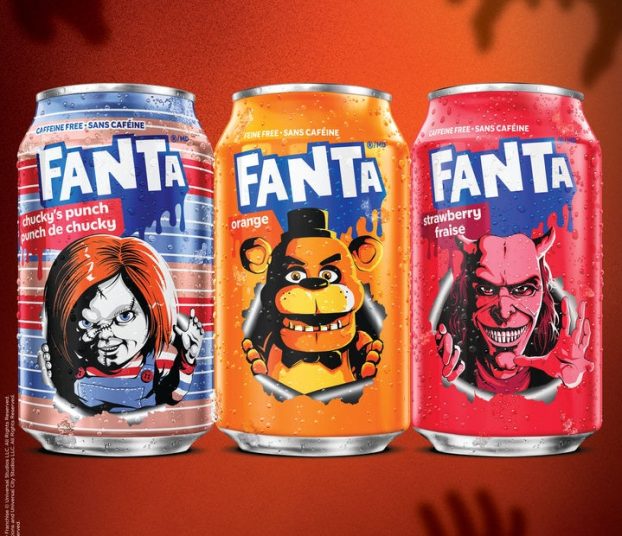Laurie Dubrovac is helping the Canadian retailer Cotton Ginny undergo a phoenix-like transformation. The Mississauga, Ont.-based casual clothing company, which filed for bankruptcy in 2003, is re-inventing itself as the queen of green.
In June, the retailer is launching a loft-like new concept store in Guelph, Ont., that will have an earthy, eco-friendly focus. The chain, which has 136 stores across English-speaking Canada, is also planning to roll out six more new stores over the next year.
Dubrovac, who returned as director of marketing and communications last year, is defining its eco niche in the popular new retail space. ‘We are coming back from the ashes with a vision of sustainability,’ she says.
After taking over the company in 2003, president/CEO Tony Chahine’s plan was to return to the brand’s earthy roots by sourcing fabrics that reflected a more sustainable approach to retail, says Dubrovac. ‘His philosophy – to do business to reduce the environmental footprint – made sense for me and the brand,’ she says.
Chahine entrusted Dubrovac with branding the company’s new green mandate. ‘She was given full autonomy to grow the brand based on certain principles in our vision, and she just ran with it,’ he says. ‘She understands where we wanted to go.’
One of Dubrovac’s recent initiatives was an Earth Day guerrilla effort on April 22. She sent street teams across Toronto to ‘catch’ people in enviro-friendly acts like cycling or using a commuter coffee mug. Those who were spotted received a free certified organic cotton T-shirt and a coupon for 15% off of the brand’s organic or sustainable lines.
Even before her current involvement, Cotton Ginny was already a brand near and dear to Dubrovac’s heart. She worked at the company from 1999 to 2003, before it went belly up. A former agency broadcast producer, she joined the Hudson Bay Company in 2003 and was promoted to director of in-store marketing, but returned to the Ginny fold last year so she could work with a company that she says is ahead of the curve.
‘I was moved by Tony’s passion for building a business that has a positive impact on people,’ she says. ‘Lots of companies say this in their mission statement, but not all really live it. Ultimately, to be a good marketer, you have to believe in your product. There can’t be one atom’s worth of doubt. I believe in Cotton Ginny.’
She adds: ‘To be able to work for a brand that not only wants to be profitable, but kind to the environment and farmers, and workers in developing nations, feels good. It feels right. Also, I believed, (and still do) there was no one out there who wanted to see this brand succeed more than I do or have as much passion for the brand as I do.’
Last September, Cotton Ginny launched Eco-Ganic, a 100% organic cotton clothing line that includes T-shirts, fleece clothing, and baby outfits. Dubrovac focused her resources on promoting it in mags like Viva and Green Living, as well as at cottonginny.ca, which was redesigned in-house last fall.
The Eco-Ganic launch campaign focused on educating consumers about cotton. While it’s a natural fibre, it’s one of the most chemically treated crops on the planet: One T-shirt
equals 150 grams of fertilizer, she says.
Buying organic not only helps the planet,
but it also helps farmers who’ve become
debt-ridden trying to buy pesticides for their crops, Dubrovac explains.
The organic demographic was a group she knew would buy the product. Now, they are ready to take it more mainstream, to fashion-conscious women 30-49. She enlisted the help of Toronto-based PR firm Hill & Knowlton Canada to help generate buzz about the eco-friendly line, and landed coverage in the Calgary Herald and Homemakers magazine.
Dubrovac has just started rolling out the new Ology clothing line made from corn, soya and bamboo, which is aimed at the more sophisticated shopper. While Cotton Ginny has made its mark as a comfortable clothing line for women of all sizes, the Ology clothing will have a tailored fit.
In a bid to stretch interest, Dubrovac will release the new line in three successive waves. On March 12, its Asian-inspired collection made with bamboo fibres was introduced, followed by a soya collection with an African theme. This month, Cotton Ginny will launch its Indian-inspired collection made from corn fibres. Dubrovac says the company will widen its scope of promotions, which initially focused on green publications, to include fashion magazines like Flare and Elle. The high-fashion-inspired ads featuring stylish photography and lush backdrops were all done in-house.
‘She presented [Ology] in the market in a very strong way – I’m very impressed,’ says Chahine, adding that early results indicate the new line is selling well. ‘It’s been very successful.’ To further tie the new line to sustainability, Cotton Ginny sponsored the Green Living Show, a green product fair held in Toronto late last month.
Right now, over 39% of Cotton Ginny’s clothing is made from organic cotton, and the company’s goal is to have 100% of its products made from organic fibres in just two years. ‘That’s pretty awesome considering where we started,’ she says.
To support interest, the company launched a national contest for fifth and sixth graders last fall. Students were asked to submit essays about what sustainability meant to them, and Cotton Ginny would donate $1,000 to the charity of the winning child’s choice. In addition, the company allows its employees to spend eight paid hours each year volunteering for a local charity of their choice.
Despite all the green hype, Dubrovac doesn’t look at herself as a fringe marketer. ‘The organic appeal is not just for the granola types and tree huggers,’ she says. ‘All companies are embracing the environmentally conscious movement. It’s not even considered a fleeting trend anymore; it’s simply how you do business.





















